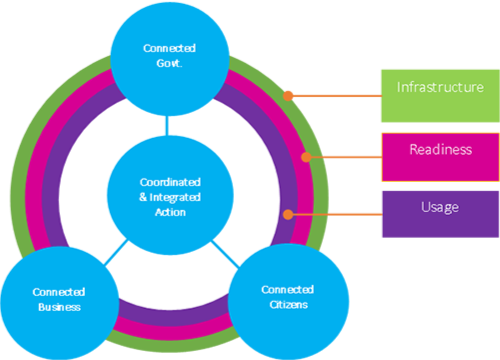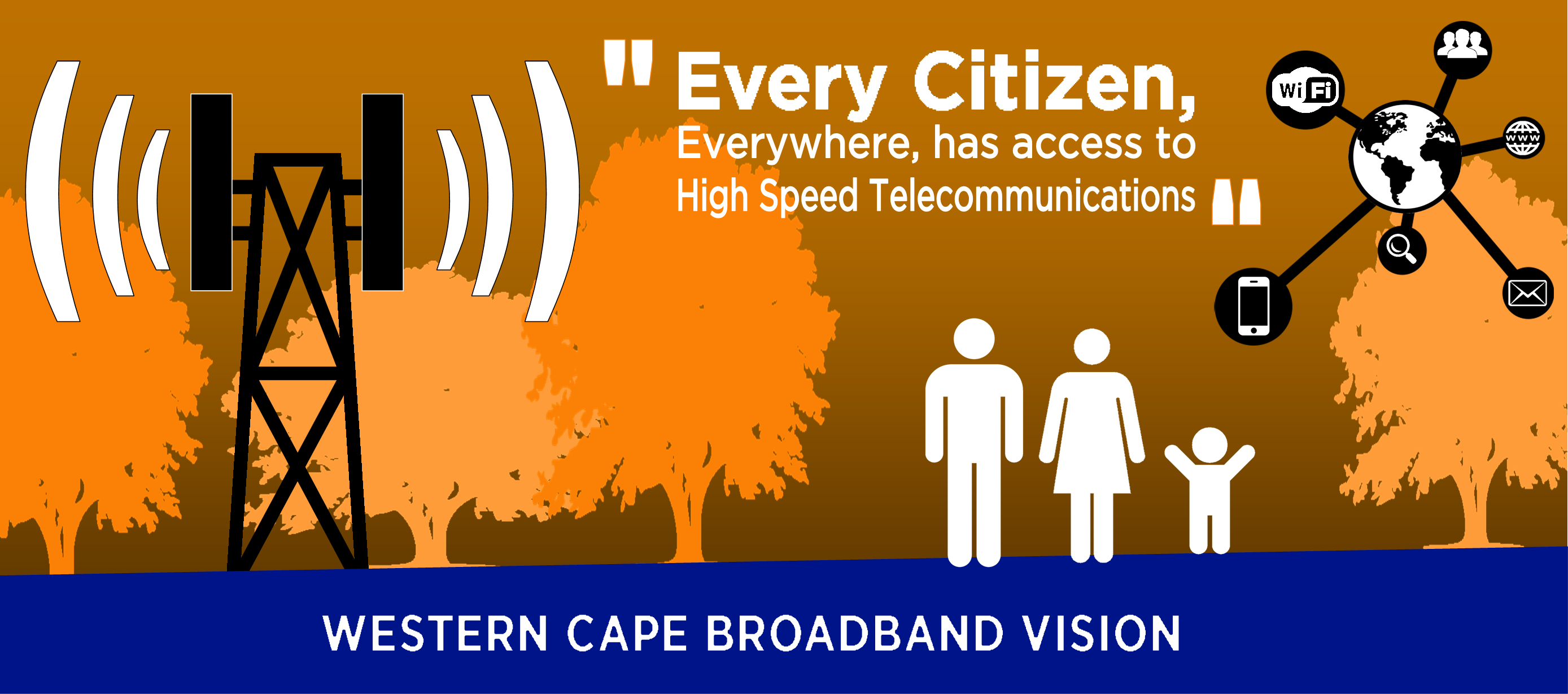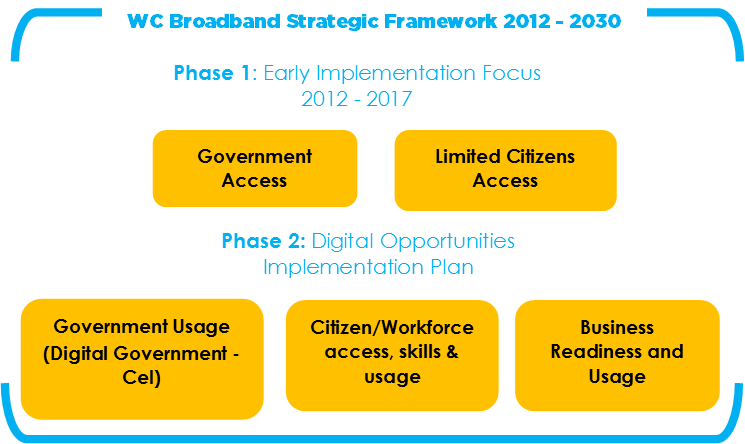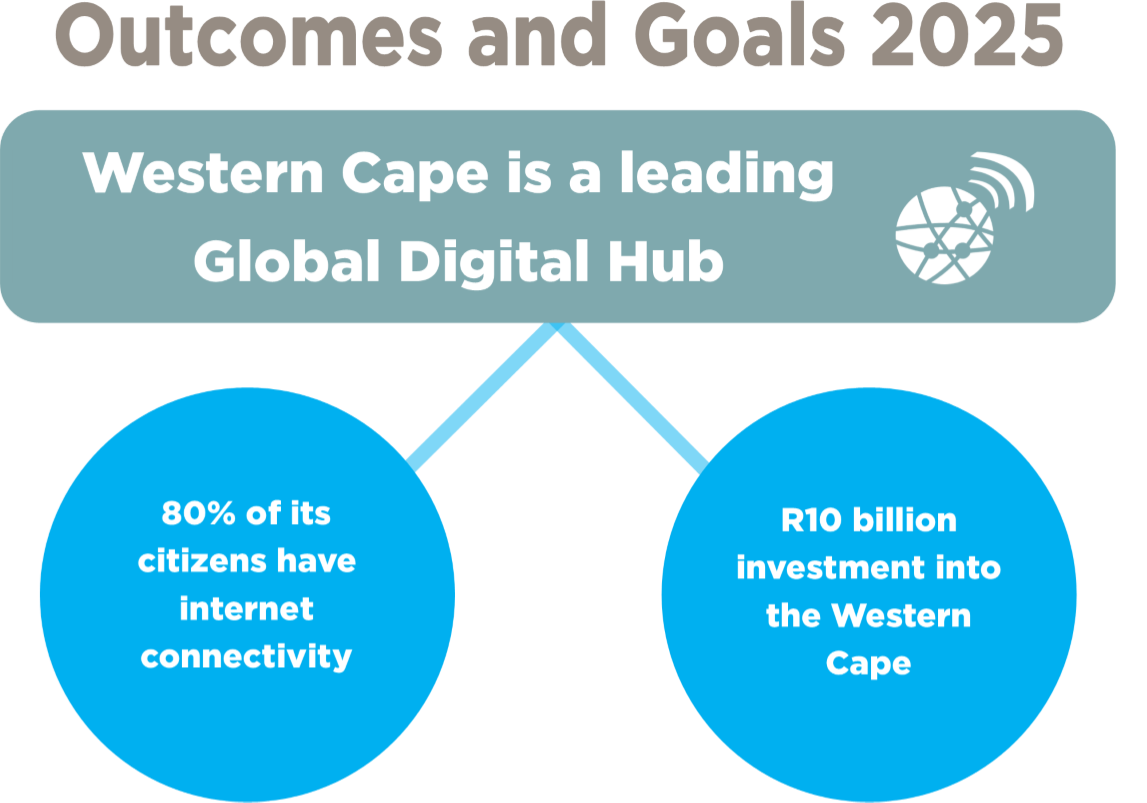Digital Opportunities Implementation Plan

Digital Opportunities Framework

Western Cape Broadband Strategic Framework
The Western Cape Broadband Strategic Framework, which preceded the adoption of the National Broadband Strategy, SA Connect, sets out a holistic approach to broadband deployment in the Province encompassing all of the recommendations of the national broadband policy.
Adopted by the Western Cape Provincial Cabinet in June 2012 as the Western Cape Broadband Strategic Framework, and modelled on the World Economic Forum’s Network Readiness Index which deals with government, business and citizens as 3 pillars of a digital economy, the Western Cape Broadband Strategy outlines the thematic areas of focus adopted by the province.
Flowing from the thematic and focus areas, the Vision and the Mission Statement are as follows:
Western Cape Broadband Vision
The vision is a Western Cape where every citizen in every town and village has access to a modern, robust and affordable high speed telecommunications environment that connects government, citizens and the economy to improve productivity and access to new markets.

Western Cape Broadband Mission Statement
The mission is that by 2030, every citizen has access to affordable high speed internet (infrastructure and services), has the necessary skills to be able to effectively utilise this infrastructure and does this as part of their daily lives.
Within this vision, the internet catalyses various support mechanisms as it opens citizens and businesses to options and possibilities by giving better access to information, services, resources, and opportunities that empower us to act on our personal, professional, and business ambition.

Through the implementation of the provincial Broadband Strategic Framework, the Western Cape is able to:
- Improve telecommunications and technological infrastructure across the provincial and local government spaces (Connected Government);
- Improve citizens access to broadband infrastructure, information and opportunities – broadening their participation in the economy (Connected Citizens);
- Increase access to new opportunities and markets, while making our environment more competitive (driving productivity). And creating an environment for the new kinds of service oriented businesses in the local, national and international space (Connected Business).
The figure below provides an overview of the journey undertaken by the Western Cape Government regarding its broadband/digital economy strategy and contextualises the next phases which will be encapsulated by the Digital Opportunities Implementation Framework.

The goal statement for the next phase of the Western Cape Digital Economy has been adjusted to reflect the rapidly changing environment but also to demonstrate the heightened focus on the resilience and future-proofing of the Western Cape economy.

Digital is one of the defining mega-trends of the current era that’s reshaping the landscape of civil society, affecting the public and private sector and creating new opportunities for organisations that adapt effectively to a world of digital.
“Digital disruption” is defined as the changes enabled by digital technologies that occur at a pace and magnitude that disrupts established ways of value creation, social interaction, doing business and more generally our thinking.
There are a number of factors that have simultaneously converged which give rise to the disruptive trends that are shaping our future, most notably, new technology, hyper-connectivity and globalisation and changing demographics. In addition to the technology advances, the intersection of human beings and technology. This feature is a substantive effect on the digital economy.
The Digital Opportunities Implementation Framework provides a guide for the work of the Department of Economic Development and Tourism. The initiatives over the coming years will cover both the supply-side and the demand-side factors within the digital economy. These are broken down as follows:

The enabling environment (supply-side economics) says increased production drives economic growth. The factors of production refer to capital, labour, entrepreneurship, infrastructure and land and regulation. It aims to create a conducive environment for businesses to grow and create jobs. In relation to the digital economy, the various digital technologies are an input factor.
The economic development tools of support for the Enabling Environment are as follows:
- Skills & Workforce Development
- Enterprise Development
- Ecosystem Support
- Infrastructure and Access Support
- Regulatory Environment
Demand stimulation (demand side economics) is embedded in the understanding that economic activity is best boosted by increasing the demand for goods and services. It aligns to the ethos of the Western Cape for demand-led development. In terms of the digital economy, the demand for ICT and Digital products and services will be driven by the various economic sectors, local and foreign market development.
The economic development tools of support for the Demand Stimulation are:
- Rationale for WC economy sector choice
- Sector choices
- Specialised Incubation and “Dash-tech” Technology hubs
- Government procurement
- Regional Marketing & Promotion (global positioning)
- Growing local audiences & markets


